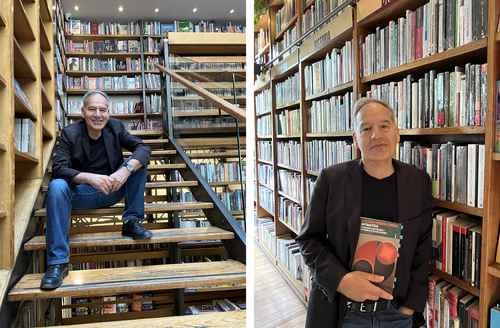The book Antimatter, the mysteries it holds and the promise of its applications, by the Mexican physicist Gerardo Herrera Corral, is an invitation to knowledge for curious minds. From the first glance at the cover and as the reading progresses, it raises questions: what is antimatter? Where is it? What is it like? How and where is it produced? What does antimatter have to do with it? with a banana? How could it help cure cancer?
To try to answer each of these questions, the author wrote an essay published by Sexto Piso, in 232 pages distributed in 10 sections, which include the prologue by scientific popularizer Arturo Fernández Téllez. It takes a tour from the origin of the universe, the questions about it and the European Organization for Nuclear Research (CERN, French acronym of the previous name of that organization), where antimatter is produced, and then addresses the applications in the field of health and end with a section on the philosophical implications of the topic.
Although for some antimatter could mean the plot of a science fiction movie and for others something totally new, Gerardo Herrera, in an interview with this medium, said that he decided to publish the book in the context of the almost 100 years of the scientific discovery of the antimatter (for some 1928 and for others 1931).
It is there, we know about it, it exists; It is a part of reality and it is not bad for people to know what the universe is made of
he states.
Project researcher Alice (A Large Ion Collider Experiment), one of the four most important of the Large Hadron Collider (LHC), in Geneva, Switzerland, explained that one of the objectives of his text is to reveal the curtain of mystery around antimatter, the which, As a theme in movies or newspaper news, it is part of something incomprehensible, which causes strangeness. Reading this book will help reveal that there is nothing mysterious, enigmatic, but rather it turns out to be a fascinating substance.
.
Herrera stated that although for many it may be something very distant, “antimatter is increasingly present in everyday life. It is used in hospitals to obtain photographs of the inside of our body and diagnose, and just as in hospitals, it will be increasingly used as fuel for spacecraft, new ways to treat cancer.
Antimatter is in the past, present and future; It’s good that people have an idea of what it is.
Although a large audience leans toward narrative genres with different themes or so-called personal improvement, Gerardo Herrera added that Antimatter… It is aimed at young people who show interest in science.
“In Mexico little is written and read about science, but we believe that there is a growing interest among new generations. The millennials They have enormous interest, and demand reading materials.
“We believe that we will soon see a boom of consumption of magazines and books of scientific literature, so that the effort of writing scientific essays, the commitment to disseminate science, is dedicated to the new generations.”
The scientific communicator explained that in Mexico concepts such as antimatter are outside the basic education syllabus, unlike other countries, where they are included.
He believes that study programs should reconsider mentioning some of the scientific advances in elementary particles.
It is still taught in schools that elementary particles are atoms or the periodic table of chemical elements, when it is no longer a table of elements; The educational syllabuses are from 50 and 60 years ago, without an update
lament.
The physicist considered that between the avidity of young people for science and the context of current education in this field, his work will take on additional meaning, which is that of continuous teaching, that need we have to continue learning throughout our lives; Training does not end when school ends, we must continue acquiring the knowledge that is disseminated in newspapers and books
.
Art and mathematics
In the midst of his work rhythm, which includes monitoring experiments at CERN, discussions with students, meetings with colleagues and constant updating – which includes reading new scientific articles – Gerardo Herrera said that he finds time to write books on the plane, since many times their trips are more than 14 hours.
He announced that he is preparing a new book in collaboration with the sculptor Sebastián, who works a lot with geometry and steel, and has always had scientific and mathematical references in his work, such as topological transformations of bodies
.
He commented that for months they have been talking about quantum mechanics, how to generate geometries and how these can be evoked in a sculptural work. “We meet once a week, we talk, and he works on a collection of works on the topics we talk about.
We want to generate sculptural pieces and texts that talk about the concepts represented in this interesting, beautiful project, for those interested in science and art.
